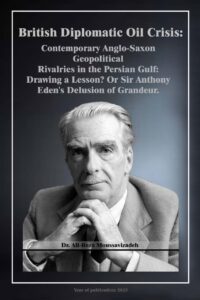The British Imperial Establishment, Post Imperial Era, and the ‘Churchillian’ World View, 1945-2016. (Adjustments & Challenges in Contemporary British Diplomatic Strategy)
64
independence. Indian national sentiments, however, had already been influenced
even before the Japanese
came; so in 1945 the British started planning for India’s
acceptance as an independent member of the
Commonwealth. This solution was
bedevilled by serious religious differences between the two main communities
of
the sub-continent. “With no chance of reconciling the two groups, as evident in
the Muslim
‘direct action’ day in 1946, the only answer seemed to be the division
of the landmass into two
separate states, which division unfortunately brought
communal killings and large-scale
migration.”2 Therefore, as a result of these
negotiations there
emerged in 1947 two new Dominions, India and Pakistan. The
concept of the Commonwealth as a white man’s
club had been broken. This
opened the way for the advance to nationhood of all the ‘coloured’
colonies.
However, no actual timetable in the late 1940s and early 1950s had been worked
out. Only at
some vague time in the future would the dependent colonies reach
nationhood.
Another
point which is noting is the further change that India imposed on
the structure of the Commonwealth in 1949.
“Queen Victoria may have been
pleased to receive in 1875 the title of Empress of India, and Indian
princes may
have been delighted to participate in George V’s coronation durbar in 1911, but
the new
leaders of independent India were not prepared to acknowledge the
British king as their emperor. Hitherto, a
vital bond of the commonwealth-empire
structure had been the notion of common allegiance to the British crown
by all
members. But that formula did not suit the Indians who wanted to have their own
head of state –
in fact, to be a republic with a president.”3 This demand
was
accomodated due to the compromising skill of the British political elite. In 1949,
at a meeting of
Commonwealth prime ministers, it was finally ratified that India
could be a republic and at the same time
remain a member of the Commonwealth.
In addition, India would not have to swear allegiance to the British
crown, simply
recognise the British king as head of the Commonwealth. “So the way was cleared
Pages: 1 2 3 4 5 6 7 8 9 10 11 12 13 14 15 16 17 18 19 20 21 22 23 24 25 26 27 28 29 30 31 32 33 34 35 36 37 38 39 40 41 42 43 44 45 46 47 48 49 50 51 52 53 54 55 56 57 58 59 60 61 62 63 64 65 66 67 68 69 70 71 72 73 74 75 76 77 78 79 80 81 82 83 84 85 86 87 88 89 90 91 92 93 94 95 96 97 98 99 100 101 102 103 104 105 106 107 108 109 110 111 112 113 114 115 116 117 118 119 120 121 122 123 124 125 126 127 128 129 130 131 132 133 134 135 136 137 138 139 140 141 142 143 144 145 146 147 148 149 150 151 152 153 154 155 156 157 158 159 160 161 162 163 164 165 166 167 168 169 170 171 172 173 174 175 176 177 178 179 180 181 182 183 184 185 186 187 188 189 190 191 192 193 194 195 196 197 198 199 200 201 202 203 204 205 206 207 208 209 210 211 212 213

